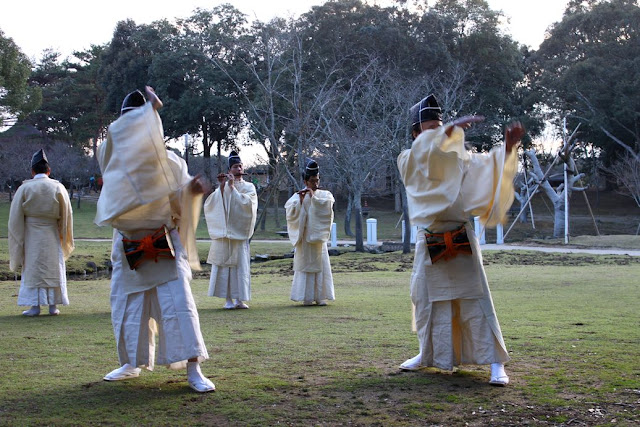 Shinto is indigenous religion of Japan and based on nature worship. It is said that there are eight million Shinto deities. They are everywhere, residing in the sun, the moon, mountains, rivers, rocks, waterfalls, trees and more. Shinto deities are almost synonym of Nature.
Shinto is indigenous religion of Japan and based on nature worship. It is said that there are eight million Shinto deities. They are everywhere, residing in the sun, the moon, mountains, rivers, rocks, waterfalls, trees and more. Shinto deities are almost synonym of Nature.Since ancient times, people have been thankful to nature and continued to pray to the deities for happiness, peace, no disease, good weather and good harvest. Now, I realize the most important prayer among them is good weather which also means no natural disasters. How powerless we are in front of Mother Nature! So many lives were lost because of the earthquakes and Tsunami on March 11th. Our happiness, peace, no disease or good harvest - everything seems to be based on good weather.
These are sincere and quiet prayers offered to Shinto deities, and I pray for the souls of the dead and the people in suffering. No more earthquakes, no more Tsunami, no more nuclear plant threat, no more hysteria following them.
Shinto priests pray and float white paper dolls down a river to wash away bad luck.
Torments or sufferngs, go away!.
Worshippers pray to the deity.
Various dances dating back to the ancient times are offered
to the deity or deities with prayers.
to the deity or deities with prayers.
Boiling Water Ritual for purification.
Two weeks passed since March 11th. TV news showed in a shelter children speaking to elderly people, and giving massage to them with beautiful smiles . The elderly people also smiled to the children. When I saw this scene, I felt this is the first light of the hope for recovery and could believe that Japan will rise again.
A number of warm messages from the world have been arriving here in Japan through internet or social networks. This is "Pray for Japan (Your message is translated into Japanese)" of facebook, whose site is attached at the top of my sidebar. Messages sent from the world are translated from English into Japanese by volunteers so that the people can read them. I am one of the volunteers and wish I had more time as the words have strong power. While translating them, I am moved to tears sometimes.
I thank all of you and the world for thinking Japan and praying for us.

























































